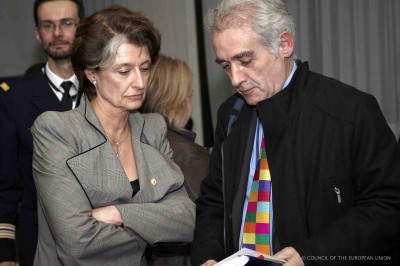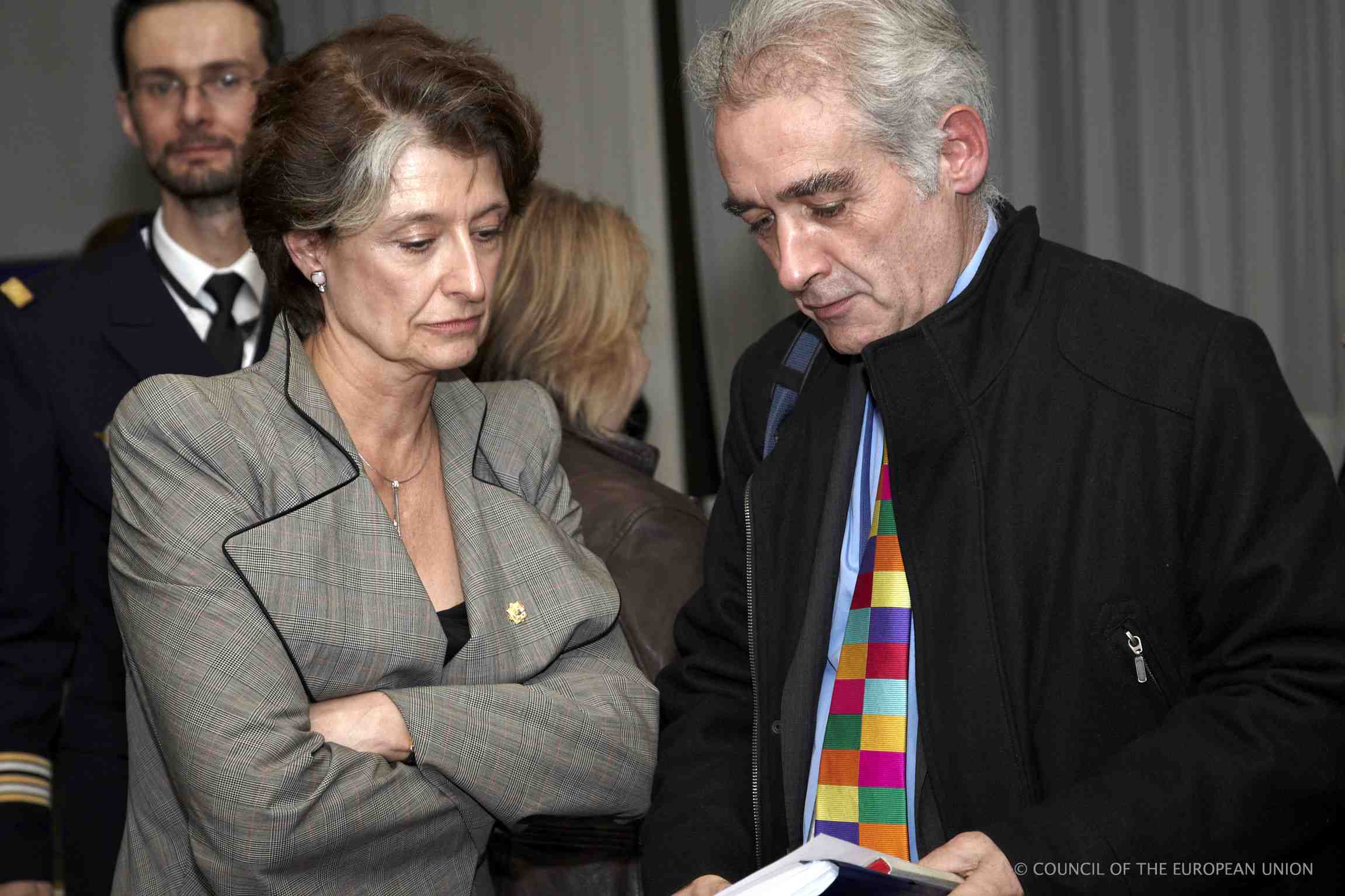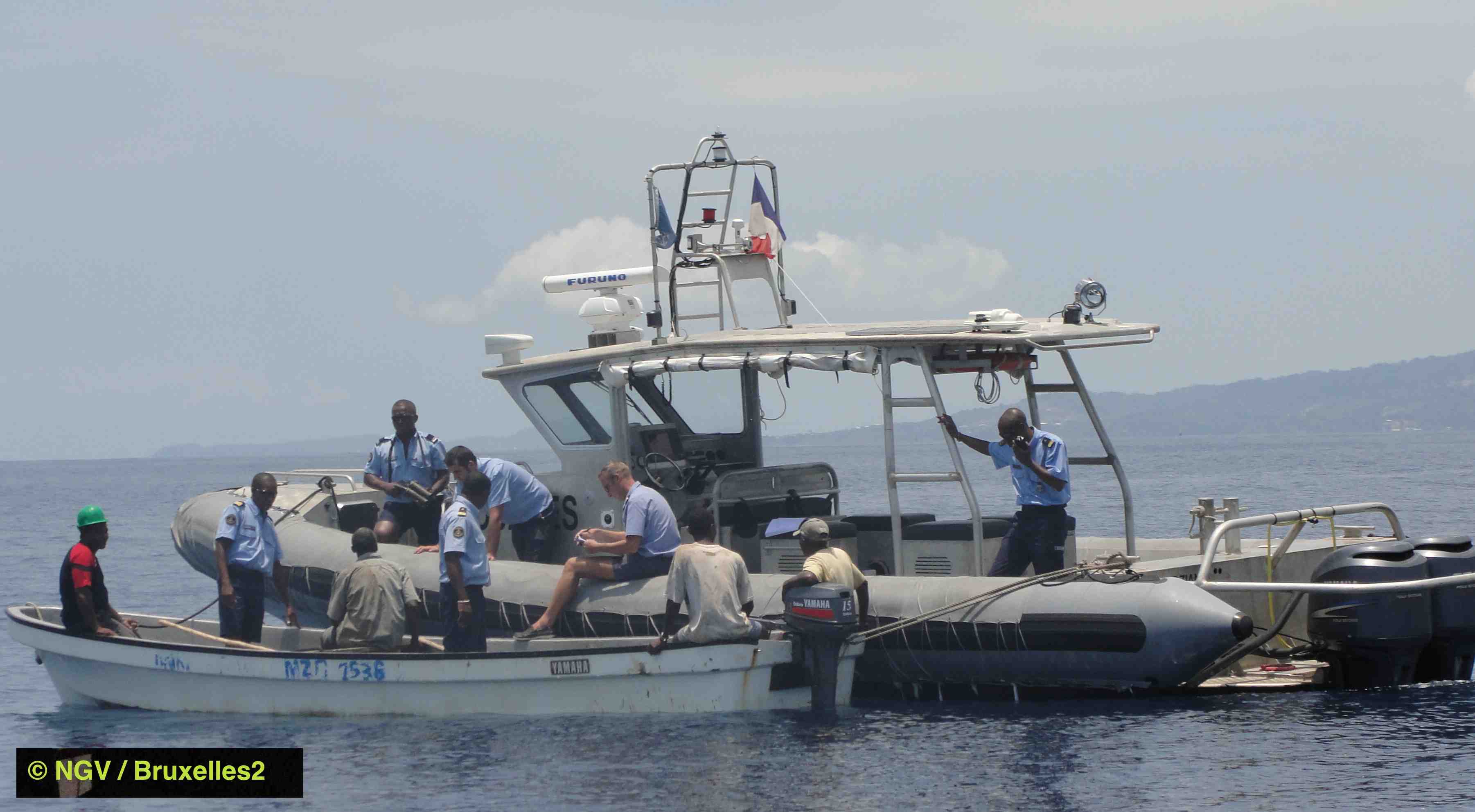Europe is beefing up its defence. 11 operational projects. List and details

(BRUSSELS2) The Board of Directors of the European Defense Agency – that is to say the 26 Defense Ministers of the European Union – approved a series of concrete projects on Wednesday. A list that could be completed later. Because other projects are still in the works, for example that on homemade explosive devices (IED), a program that Spain wanted to promote (the change of government apparently prevented an official position being taken).
Not all countries will participate in all projects. Corn " almost all countries have indicated their intention to participate in at least one of the Agency's projects » said Claude-France Arnould, executive director of the Agency. A project generally brings together 6 to 8 countries. We generally find France and the United Kingdom. But other countries, such as Finland for example, have been very forthcoming, showing their interest in several of the projects and taking the lead in the maritime surveillance project.
Some of the projects have already started or will be started shortly with effects from 2012 or 2013. Others are more long-term, with preliminary studies and effects by 2020. It can be noted that all of them have a dimension very practical, with a fairly rapid return on investment target, and a more programmatic dimension, to allow rationalization of investments in the future.
Read also:
- Defense capabilities: the Agency goes concrete
- Switzerland moves a little closer to the European Defense Agency
- A circle of good practices so as not to save “dumb”
- Pooling and Sharing in practice. The projects of the European Defense Agency
- "Pooling and sharing", new udders of European defense
11 programs for the future
1. Helicopter pilot training
A program already started and which “works with the fire of God” one officer would swear. Candidates flock to each session. Around 150 crews have already been trained over 3 years through exercises held in several countries (France, Italy, Spain, etc.), specialized courses and feedback seminars.
Read also:
- The helicopter pilot training project: yes, go up
- 30 European helicopters in a grouped formation north of Rome
2. The maritime surveillance network
Project already started, led by Finland. It is a necessary component of reconnaissance capability. Producing a global view of the maritime situation is in fact a key condition both for security around EU countries and in deployed operations. There is also a search for complete synergy between military and civilians. From six countries initially, the project now brings together around fifteen countries (Belgium, Cyprus, Germany, Greece, Spain, Finland, France, Ireland, Italy, Lithuania, Netherlands, Poland, Portugal, Sweden, United Kingdom).
Read also: Marsur, the smart interface that replaces the “22 in Asnières”
3. Naval training and logistics
A first study must be carried out quickly (2012) to determine what sharing or pooling initiatives can be taken. All options are open. The simplest would firstly be to have a common calendar, constantly updated, allowing each of the naval headquarters and the EU to know at a single glance about certain key resources. (refuellers, aircraft carriers, etc.), times of availability, training or maintenance recall. And therefore to coordinate these operations, in order to always have a capacity operationally available within the EU. Maritime training is also a mark of interest of several member states. Some small countries have niche capabilities. And even states that do not have a navy may be interested. According to our information, Latvia has offered to share its naval diving school with Austria.
4. Deployable Field Hospitals
It is undoubtedly one of the most operational projects in the Agency's portfolio. Medical support is a key element for EU operations. We remember that medical support had been a delicate point for the deployment of the latest operations, whether in Chad (Eufor) or Uganda (Eutm Somalia), delaying the launch of the operation by a few weeks. This project is led by Italy with the participation of 11 other states (Austria, Belgium, Cyprus, Czech Republic, France, Finland, Hungary, Ireland, Italy, Romania, Sweden, Slovenia and perhaps the Netherlands). It will be based on a series of modules, interoperable and compatible with “NATO standards”, currently being updated. The objective is to have a deployable Role 2 capability by 2013-2014.
5. In-flight refueling (Air to air refueling)
Kosovo had outlined it, Libya demonstrated it. In-flight refueling is a critical point for any operation that requires an air presence. This involves having a unique aerial platform that can refuel fighter planes as well as UAVs. The timing is particularly crucial. We are at the crossroads between two waves of equipment. The planes serving in the fleet are aging, new ones are ordered or on order but have not yet arrived. A clear opportunity to avoid repeating the mistakes of the past. Europe today has only 42 planes but has 10 different types, while the United States has 650 planes (15 times more!) but only 4 types. The objective is to reduce – thanks to new equipment – to only 4 types: MRTT 330, A400M, C130J and 767. “If we miss this opportunity” explains a specialist in the file, “we are left for 30-40 years” . In the short term, the objective is also to facilitate support for the existing fleet. France has offered its base in Istres, where part of the logistical support could be provided.
6. Purchasing center for satellite communications (ESCPC)
A project that will start immediately as well. Satellite communication (Satcom) is vital for the conduct of operations – C2 command and control – as well as for intelligence and targeting – ISRT intelligence, surveillance, reconnaissance and targeting. The operation in Libya demonstrated this sufficiently. The increasing use of drones on the UAV battlefield makes this capability completely mandatory. This pilot project is intended to pool all requests for satellite slots to obtain a reduction from service providers. It is based on the same principle as traditional purchasing centers, with an additional obligation: speed of access, security of the service. “ The military is a “small” buyer in the market where the big consumers are televisions, telecommunications companies, etc. » explained to B2, an expert from the Agency. On arrival, it is estimated that the reduction in costs can reach a minimum of 10%. Participating in this project are French, British and Polish. Astrium was chosen as broker (wholesale buyer) and will see what is available on the market.
7. Future military satellite communications system
Same principle as for tanker planes. The next generation of military satellites is coming. Today there are five European systems in orbit, several of them have limited coverage and their replacement is planned between 2020 and 2025. The objective is therefore to begin the development of the future generation SatCom for after 2020, by determining the capacity needs of users in Member States and the EU, and preparing the development of appropriate technologies from a civil-military perspective.
8. Intelligence, Reconnaissance, Surveillance (ISR)
From surveillance to precision targeting, nothing is done without a high-precision ISR system. But this comes at a significant cost.
9. Pilot training
The training of transport pilots is so specific that few countries have the appropriate training center (and simulators – which are expensive). Due to the lack of a center, several countries send their pilots to the United States, but places are very limited and the cost is higher. This project is “led” by France. A first study will be carried out quickly to examine the training to be developed and the conditions for this.
Read also: Pooling and sharing: France offers a school of the future for pilots
10. European Transportation Hub (EATF)
Read also: Signature of the agreement for EATF, the 'Star Alliance' of military transport
11. Smart ammo
Here again, the Libyan experience has shown how valuable so-called “smart”, high-precision, laser-guided munitions are, which allow them to reach their target without collateral damage. Ammunition which has a certain cost. Use in combat rhythm quickly depletes stocks. Many ammunition systems and storage systems can quickly become obsolete, both from an operational and safety point of view. In the short term, a study will be launched (2012) and research & technology projects could be initiated with a longer term result (2020).



Comments closed.